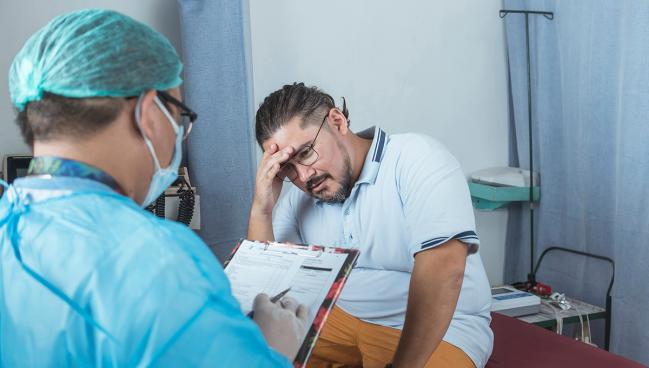Sky-high Cost of SGLT2i and GLP1 Agonists Deter First-line Use
The proven cardiovascular benefits of these agents can’t be realized unless prices drop by as much as 90%, researchers say.

Although newer drug classes have the potential to improve life expectancy of patients with diabetes by significantly reducing CV events, a new analysis suggests that the benefits of using these drugs as first-line therapies will never be realized for many patients unless their prices are slashed.
Compared with patients taking metformin, patients on sodium glucose cotransporter-2 (SGLT2) inhibitors and glucagon-like peptide-1 (GLP1) receptor agonists experienced less heart failure, ischemic heart disease, MI, and stroke. However, only metformin fell below the willingness-to-pay threshold of US $150,000 per quality-adjusted life-year (QALY).
To fit within that threshold and be considered reasonable for use as first-line therapies for diabetic patients, the price of SGLT2 inhibitors and GLP1 receptor agonists need to drop by 70% and 90%, respectively, according to the analysis published online October 4, 2022, in Annals of Internal Medicine.
“Our study provides more evidence for the fact that these drugs are frighteningly expensive,” lead author Neda Laiteerapong, MD (University of Chicago, IL), told TCTMD. “In terms of the question of should we use them even more than we already are using them, it should give people pause [to] maybe start to think about what we need to do to make these drugs more affordable.”
Current guidelines from the American Diabetes Association and the European Association for the Study of Diabetes recommend SGLT2 inhibitors or GLP1 receptor agonists as first-line therapy, with metformin, in patients with type 2 diabetes and with, or at high-risk for, atherosclerotic cardiovascular disease (ASCVD), heart failure, or chronic kidney disease. The agents are recommended as second-line drugs for diabetic patients without ASCVD, but not if “cost is a major issue.”
However, as Choi and colleagues point out, if the costs of these drug classes start declining as a result of losing market exclusivity, things could change. They conducted the current analysis, they say, to inform future guidelines.
Commenting for TCTMD, Steven Marso, MD (Midwest Heart and Vascular Institute, Overland Park, KS), said excitement over the ability of SGLT2 inhibitors and GLP1 receptor agonists to “close the gap” in residual risk of death and CV events between patients with and without diabetes must be tempered by the price barriers highlighted in this analysis and others.
“Prior generations of patients had no targeted therapy to reduce cardiometabolic risk, and now our current generation is still sort of without hope because of the price of drugs,” he said. “This analysis used a fairly low-risk population, and the [benefits] may be even higher than what they estimated. But having said that, the issue remains that it will be only the next generation of patients who will likely [realize] a benefit because of the affordability issues.”
For patients today, he added, that may mean untold years of life lost.
“A person who is diagnosed with type 2 diabetes, who is 50 years of age, will likely have a life expectancy 7 to 8 years less than their counterparts due to residual cardiometabolic risk,” he explained. “And we have these classes of agents that have the potential to reduce that risk.”
Pricing Patients Out of Care
The new findings, showcasing the impact of cost on potential benefits, are in line with another recent cost analysis of quadruple therapy, including SGLT2 inhibitors, as recommended in recent US guidelines for patients who have heart failure with reduced ejection fraction (HFrEF). That analysis projected that all Medicare patients prescribed quadruple therapy will reach catastrophic coverage status before the end of any calendar year at current pricing, with the SGLT2-inhibitor portion accounting for 50% of those costs.
For their study, Laiteerapong and colleagues led by Jin G. Choi, BS (University of Chicago), created a patient-level model based on 26 characteristics. The simulation model was used to predict the lifetime incidence, prevalence, mortality, and costs (in US dollars) associated with diabetes for a nationally representative sample of 493 participants with diabetes (average age 55 years; 50% female) eligible for first-line therapy. Investigators modeled treatment outcomes for the first-line use of metformin and second-line use of SGLT2 inhibitors or GLP1 agonists, first-line use of SGLT2 inhibitors, and first-line use of GLP1 agonists.
First-line SGLT2 inhibitors and GLP1 receptor agonists were projected to improve life expectancy by 3 or more months compared with metformin, typically by reducing rates of macrovascular disease complications (congestive heart failure, ischemic heart disease, MI, and stroke). But SGLT2 inhibitors were estimated to be $478,000 per QALY versus metformin, while oral GLP1 receptor agonists had an even heftier price tag at over $1 million per QALY versus SGLT2 inhibitors.
Our study provides more evidence for the fact that these drugs are frighteningly expensive. Neda Laiteerapong
Based on the willingness-to-pay threshold of less than $150,000 per QALY, SGLT2 inhibitors would need to come down in price to about $1,800 per year, or $5 per day. Similarly, oral GLP1 receptors would need to come down to about $2,100 per year, or $6 per day, the researchers conclude.
“Generics of these drugs are coming soon, but as studies of generic drug prices over time have found, generics are priced higher when they come out than they used to be and remain high because of limited competition,” Laiteerapong noted.
Depending on their insurance and/or ability to pay, access to SGLT2 inhibitors or GLP1 receptor agonists will always be easier for some patients than others, she added, translating into differential outcomes that further widen health inequities. Being open to patient concerns or questions about drug costs and insurance, Laiteerapong said, is important for clinicians to keep in mind in discussions around medical therapy.
“One thing that I think is really important is that sometimes clinicians don't ask their patients: are your drugs expensive? It's possible for many people with private insurance that there will be one option available in a given drug class, or with Medicaid that will be one option within the drug class that will be covered,” she said. “I have found that patients don't tell me that their drug is really expensive and if I switched them, it would've been cheaper. But I didn't know because I didn’t ask.”
Marso said this story will likely only grow larger and more complicated if the ongoing SELECT randomized controlled trial shows that the GLP1 receptor agonist semaglutide (Novo Nordisk) significantly reduces the risk of CV events in nondiabetic patients with overweight or obesity and prior CVD. Another GLP1 drug, tirzepatide (Mounjaro; Eli Lilly), recently was associated with dramatic weight loss in nondiabetic obese patients in the SURMOUNT-1 clinical trial.
“Now it becomes a multiple problem because the prevalence of obesity is two-and-a-half times that of type 2 diabetes,” he said. “So the same math will apply. It'll just be a bigger drug expense and a bigger piece of the pie for obesity if these agents are shown to be effective in that space as well.”
Marso added that unlocking the SGLT2 inhibitor and GLP1 agonist story has been a huge breakthrough for researchers and patients and he remains optimistic. “Now we need health economists and others to sort out the pricing, because the way we’re looking at this right now doesn’t work,” he added.
L.A. McKeown is a Senior Medical Journalist for TCTMD, the Section Editor of CV Team Forum, and Senior Medical…
Read Full BioSources
Choi JF, Winn AN, Skandari MR, et al. First-Line therapy for type 2 diabetes with sodium-glucose cotransporter-2 inhibitors and glucagon-like peptide-1 receptor agonists: a cost-effectiveness study. Ann Intern Med. 2022;Epub ahead of print.
Disclosures
- The study was funded by the American Diabetes Association.
- Choi and Laiteerapong report no relevant conflicts of interest.
- Marso reports research funding from Novo Nordisk, Boston Scientific, and Change Healthcare.





Comments